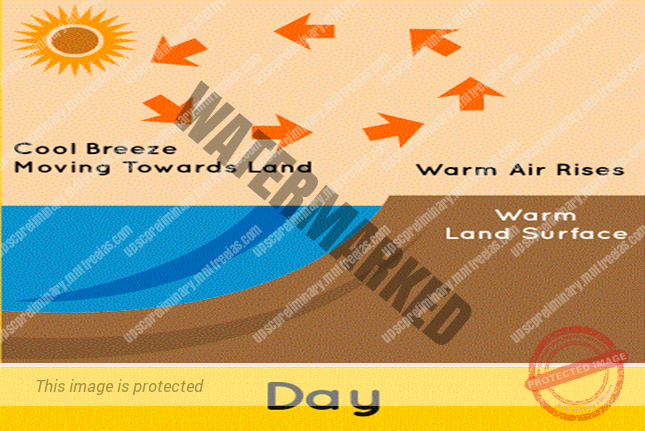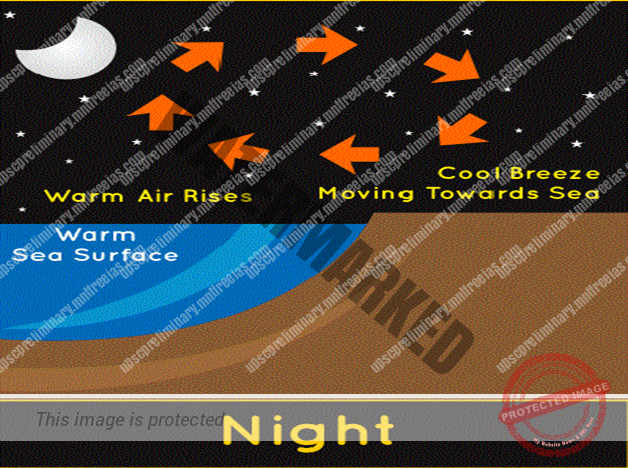- INTRODUCTION OF LAND AND SEA BREEZE
UNIT 4 – CLIMATOLOGY – PART 20
INTRODUCTION TO LAND AND SEA BREEZE
Take a walk along a dry beach on a hot early afternoon. No sooner than putting your barefoot in the sand, you start hopping and jumping and immediately run towards the sea to soak your scorching feet in the water. Yes, the sun heats both of them up. However, land and water do not heat up or cool down at the same pace. This differential heating and cooling of land and sea give rise to what are known as breezes, in the coastal areas.
THERE ARE TWO TYPES OF BREEZES:
- Sea Breeze
- Land Breeze
WHAT IS SEA BREEZE?
This process takes place for the duration of the day.
Both the sea, as well as the land surface is heated up by the sun.
The sea heats up slower than the land because it has a much higher heat capacity. Thus, the temperature over the land surface increases, in turn, heating up the air around it. An expansion occurs in the less dense warm air and an area over the land having low pressure is developed. At the same time on the top of the sea, a high-pressure area develops. Due to the difference in pressure and the air flows from the high pressure over the sea to the low pressure over the land.
This flow of air from the sea to the land is termed as the sea breeze.
Sea breeze is more prevalent on warm sunny days during the spring and summer. An amazing cooling effect and a noticeable temperature drop are experienced as a consequence of it.
WHAT IS LAND BREEZE?
This process takes place for the duration of the night and the above-mentioned process gets reversed. Both, the land as well as the sea starts cooling down when the sun sets. As the heat capacity of land is different than the sea it cools down quicker. Thus, a low-pressure situation develops over the sea as the temperature above it is higher when compared to the land. Due to this, the air flows from the land to the sea which is termed the land breeze.
LAND BREEZE
Land breeze can occur at any time of year but are more prevalent during the fall and winter seasons when water temperatures are still fairly warm, and nights are cool


